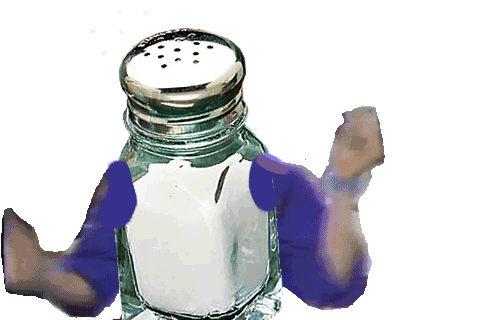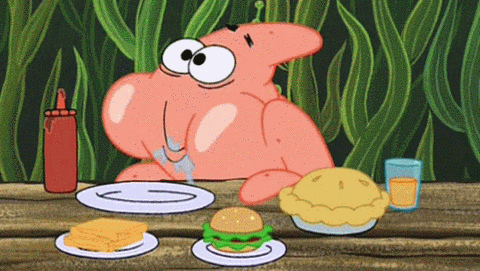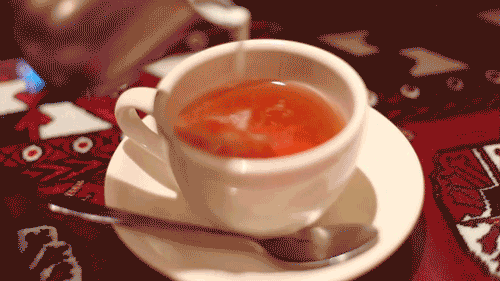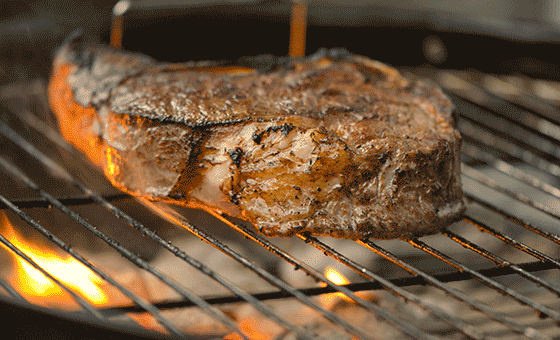As an Indian American woman, I have great pride in Indian culture, especially the cuisine. I love all the wonderful spices that are incorporated in our food. Almost every single meal that my parents cook has a common base of onions, ginger paste, garlic paste, and the same spice mix. Those spices are never boring because they are used differently in each dish.
Although I turn to American food for comfort when I’m tired of Indian food—who can resist a juicy cheeseburger?—there are some complaints, common among just about every member of Indian community that I know, about American foods and how they are prepared.
1. “Spicy” American food isn’t actually spicy.

GIF courtesy of giphy.com
For years I’ve heard my friends gasp for air and reach for water when they’ve ordered a “spicy” chicken sandwich. Although I have a stronger tolerance to spiciness (thanks mom!) than the average eater, a lot of my American friends refuse to have spicy foods because they say they can’t handle the heat. Spicy foods are actually, generally super healthy and can even help you live longer.
2. American food is too salty.

GIF courtesy of giphy.com
Salt is, considered by some a necessity, for flavoring food but, of course, too much is unhealthy for your body. Some people forget that it’s not the only flavor you can jazz up your food with. There are so many fun, healthy spices that you can use to (literally) spice up your next meal, so why limit yourself?
3. American fast food has limited cheap vegetarian options.

GIF courtesy of giphy.com
Health food is a lot more expensive than fast food, which makes it difficult for the large population of Indians that are vegetarians (myself included). Often times we find ourselves eating a lot of junk food or eating a lot of boring healthy food. Highly populated cities like NYC are lucky to have a larger amount of vegetarian restaurants available, but what about the rest of the country? Healthy food shouldn’t be a priviledge, it should be a right.
4. American food is difficult to eat without silverware.

GIF courtesy of giphy.com
Table manners are very different for Indians because we actually don’t require silverware for most of our meals. Indian tradition requires eating with your hands because it is believed that it’s very impolite to be given utensils that have come in contact with someone’s saliva. However, while many American foods can be eaten without the use of utensils aka pizza and burgers, things get more complicated when you find yourself in front of a plate of steak and eggs.
5. There aren’t many authentic Indian restaurants in America.

GIF courtesy of giphy.com
This is a common complaint among Indians, but it’s also a misconception. The are, surely, U.S. cities and towns that lack the diversity of many, or even multiple, Indian restaurants, but metropolitan cities like New York and LA have enough to make your head spin. Not all Indian restaurants in America are authentic, but you can find one if you look hard enough.
6. Coffee shop chai isn’t as good as homemade chai.

GIF coutesy of giphy,com
Coffee shops are very convenient when you need a place to sit and talk or if you’re in a rush and need caffeine as quickly as possible. Every drink tastes better when more time is invested in making it, but this is especially important for chai. Steeping it for longer ensures that the flavor from the masalas are in the chai.
While I love my local coffee shops, I would suggest making your chai at home. You will notice the difference. The road to a flavorful chai may be long and hard, but it’s worth every ounce of effort.
#SpoonTip: The best kind of chai takes about ten minutes to steep and should be made on a stove top. While I love my local coffee shops, I would suggest making chai at home. You will notice the difference. Other tips on how to make it? The road to a flavorful chai is here.
7. Fast food in the U.S. is very different from fast food in India (and not in a good way).

GIF courtesy of giphy.com
Eating at home is strongly encouraged by Indian parents because food is such a big part of our culture and parents want us to keep hold of our traditions. But that doesn’t stop us from eating out sometimes. One of the most interesting things that most Indians say when they come to America for the first time is that the fast food is different.
Most fast food chains that run in India ‘Indianize’ their menus so that they are in some way representative of Indian cuisine. Unfortunately, a lot of Indians can’t fully enjoy fast food here because of reasons mentioned in #3. Shoutout to my vegetarians.
8. American meat is too raw.

Gif courtesy of giphy.com
The first time I had steak at a restaurant in America I had no idea what to say when they asked me how I wanted it cooked. Most meats that I’ve eaten were curried and well done so I never knew that rare meat could be so flavorful.
If you’re new to the U.S. or you’re visiting, you might want to request that your steak be done medium to well done. Or ditch the restaurant steak all together and make your own at home.
9. American desserts aren’t sweet enough.

GIF courtesy of giphy.com
If you’re Indian, you know that you’re not having cake for dessert. All Indian desserts boil down to two ingredients, milk and sugar. Sugar is used excessively in our desserts not only to satisfy our cultural sweet tooth but is also to hold ingredients together.
Any typical rasmalai recipe requires about two cups of sugar, which is a lot in comparison to 3/4 cup sugar in apple pie. Of course, Indian mothers—including my own—put a little more sugar than written recipes call for to make sure that the dessert is extra sweet.
10. American flea and farmers’ markets don’t compare to Indian street markets.

GIF courtesy of giphy.com
America has many farmers’ markets and flea markets but they don’t compare to those in India, not even close. You never know what you’re going to find in the streets of India.
You can explore many areas that are known solely for having large street markets, such as Chandni Chowk in Old Delhi or Lokhandwala Market in Mumbai. These street markets have almost everything from fresh vegetables to clothing. With the amount of food and variety that you find in the streets, you don’t ever have to eat at an actual restaurant. The vast majority of American markets are indoors, and the ones that are outdoors don’t have half the variety that most Indian street markets offer.


